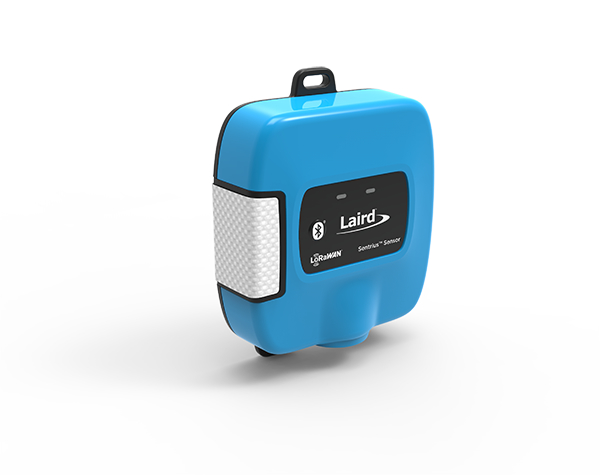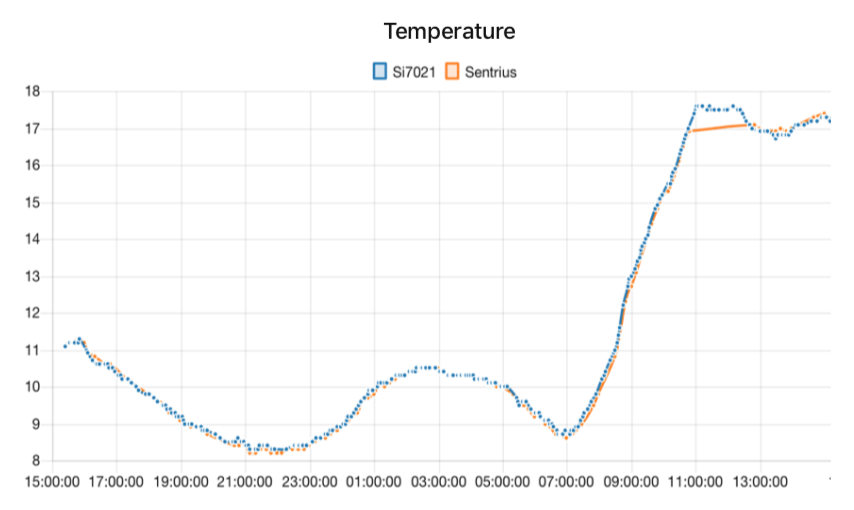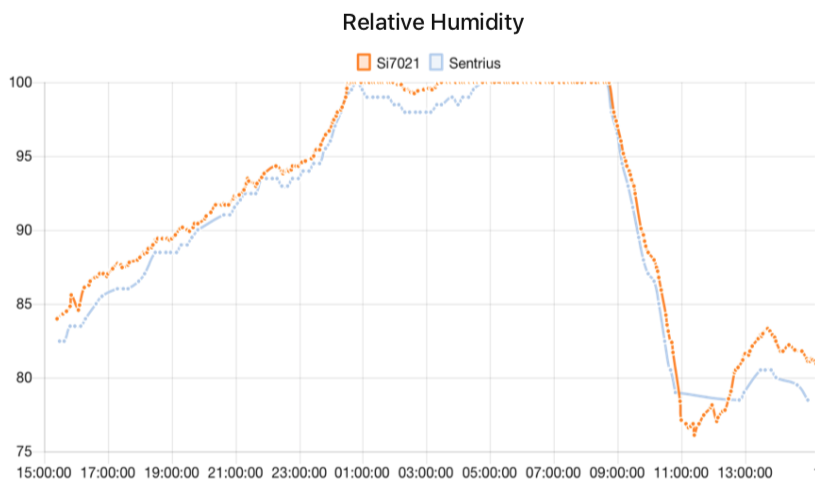Any support questions you might have can be asked here:
https://www.thethingsnetwork.org/marketplace/product/sentrius-rs1xx-series
Is there a way to decode the payload directly in TTN rather than having to use NodeRED?
you don’t have to use node red … see https://www.thethingsnetwork.org/docs/
this is not a support question for this product
It is directly related to this device. The documentation from Laird only contains examples with node red.
Ideally was wondering if there was a way to decode the data directly in the console, like with the things node
Apologies for not searching the forums deeper. I found the same issue already reported… No Payload from Laird RS1XX
release v4.4_18-10-17 :
- Add support to enable/disable confirmed packets.
- Users can now select the format of the uplink data packet in order to meet the requirements of the MyDevices Cayenne application server. The original packet format from FW version 3.1 is included under the Laird option.
- Added software watchdog timer to reset the sensor if it is not working as expected.
- Bit 3 of the options byte is used to indicate if the sensor has reset.
- Hold user button for 5 seconds to reset the sensor.
- RTC time now requested via options byte in a data packet.
- RTC requested immediately on connection and not on first data packet.
- Immediately after joining the sensor now sends an extra uplink packet containing version information.
- Previous configuration variables now retained from version 3.x to 4.x.
- The sensor will now restart after disconnecting from Bluetooth if a setting has changed.
- First uplink packet now sent at the currently loaded data rate and not the hardcoded value.
- Reduce power consumption by only performing temperature check once instead of twice.
Hello! I think, i have bricked my RS186. I try to update the FW of my RS186 using BT. And it failed !
Now when I start the node, I have two led on and… nothing more
what to do?

Contact Laird support through their website.
No help or no response?
isn’t that the same problem as discussed here and mentioned before… Laird is investigating ?
Hi, I have the RS1xx running for some time now mounted outside. While the temperature measurement seems quite accurate, I am noticing the humidity is not in conditions of > 80%.
The RS1xx is using the Si7021 sensor and I happened to have the same sensor on a break-out board, so I wanted to compare things a bit. I went connect it with an Arduino MKRWAN1300 and put it outside next to the Sentrius.
The temperatures are almost equal:

But also the humidity measure are (unfortunately):

Those measures are from last night where we had no rain or even fog, despite that getting 100% humidity, which can’t be true. I saw the same on other days where my primitive weather station measured between 80-90% humidity.
Posting this to understand if anyone else experienced the same. The RS1xx seems to be a very well made device and would have loved to use it for some project if the measures were reliable.
Note its Relative Humidity vs Humidity! So for a given temp there is a ‘dew point’ at which water will condense out - dew will form. At a guess I would say if you had a cold surface outside at the time - say a car roof or window/glasshouse etc., likley you would have seen condensate forming from around <9pm through midnight (100%RH) and onwards through the morning till it started to warm up agiain.
Any variance/lag to the two plots likely due to the white gortex like covering over the RS1xx sensor vs what you have on the bare 7021  Plus device to device variance. As you note very consistent and I would concur with you from my own experience that the RS1xx is well made and reliable - I have a number deployed and have recommended/sold a few to others.
Plus device to device variance. As you note very consistent and I would concur with you from my own experience that the RS1xx is well made and reliable - I have a number deployed and have recommended/sold a few to others.
Thanks for your reply, considering the dew point is a valid point of course. The Si7021 is not the first sensor I am testing and do not remember having seen similar behavior with the others, therefore my (eventually wrong) assumption was, the sensors would no be covered by condensate like glass or a metal surface is. Anyway, I am thinking to fetch some data from the next official weather station nearby in order to compare bit more in detail against the dew point - but that’s bit off topic here.
I had no trouble setting up an RS191 temp/humidity sensor with The Things Industries - not sure how I wound up with an account there instead of here, but no matter.
The sensor is Rev 17 firmware v7.0 21-6-11, on US 915 LoRa.
When I added the Device I just accepted the defaults Rev 4 and firmware v6.1_20_6_16. I added it from the library and the default payload decoder seems to work fine.
I did not change the communication method in the sensor, it is still set to “Laird”. Every message from the sensor has “Sensor request for server time” set. I’m looking for the JSON or something more clever to set that.
My “big” question is how to increase Tx power for more range? Right now, I assume its sending without verification?
I took it home last night (7km) and no data until I brought it back this morning.
Thanks in advance.
1st thing First, if you take your time, use forum search and look back at historic posts around this device (I use lots!) you will see that it supports 3 modes of operation wrt payload 1) Laird only, 2) Laird unfonfirmed 3) Cayenne/LPP. (1) requires confirmed messages - fine in a private network and in its intended market e.g. cold chain/supply monitoring, not ok on TTN as it end up breaching FUP in short order. Recommend use LPP or (2) - even then under (2) it will still request a confirmed message - IIRC every 10 or 20 messages - as part of its watchdog/network monitoring processes - triggering a reboot/rejoin if it thinks it has lost its service to the LNS. This may also then limit your messaging rate depending on what deployment and associated signal quality (essesntially SF) you are able to use.
Again default I think is max Tx pwer for any given territory - and you dont want to crank it up too high if not needed as remember…its Long Range! - so ever poor souls GW in range will hear you, best use ADR to manage SF and eventually TX pwr down to optimal levels.
Not unusual - remember you will likely need LOS unless able to benefit from reflections, knife edge effects, very short ground or structural absorbers and will depend on specific freznel zone characteristics for any given deployment location combination for node & gw. What lies between your home and the GW location?
For What? LoRaWAN Specification? - in which case it will likely be 1.0.4? That may be ambitious try 1.0.3 or even 1.0.2b
Again IIRC I think the device askes for a time stamp when running Laird payload and needs that to start effective operation - hence asking for it each time…few systems are set up to provide this but once answered it should go away - but you are still left with the other Laird mode issues. My recommendation - go LPP - use uplink LPP decoder in the device console and it all ‘just works’! ![]()
Hi Jeff, thanks for the speedy reply! I found this page when I tried to find info on this device, and how to increase Tx power.
Sorry my post was not clear. When one adds a Laird device to The Things Industries, one enters the model (RS191) and then it asks you to select the Hardware Version and Firmware version. But it only lists HW Rev 4, mine is HW Rev 17. And firmware 6.1_20_6_16, mine is actually firmware 7.0 21-6-11.
I just noticed the Things Industries system defaulted to LoRaWAN version 1.0.2. I was totally oblivious to that.
My house is higher elevation, but lots of buildings between us.
The communication choices have changed a little. Using the App I have these choices:
- Laird with confirmed packets (claims its default)
- Laird without confirmed packets
- Cayenne with or without confirmed packets.
- Laird2 with or without confirmed packets.
I still do not understand how one changes the Tx power. Its read only in their App.
Sure believe (2) added later - some of my deployments of these go back to 2018! Not all have been updated with latest fw - if it ain’t broke… ![]()
Why would you want to try? given
at any given SF until down to SF7 when ADR will start dialing Tx pwr also if presented with a strong good quality RF link…Also you need to look at the spec for the underlying RM1xx module these units are based on…to check what max o/p may be.
I may need to fire up the App on phone and look at details again ![]()
![]()
BTW if you see issues you can always set up manually rather than use the repository - by its nature this may not cover ever rev of h/w or firmware (a huge task given number of devices, vendors and variants dpending on how proactive the vendor is in supplying info/updates/historic settings input, etc) so can introduce wrinkles… All mine are manual set as hw rev never seemed to match when I wanted to deploy a new one! ![]()
I’m very lazy. So I tried the defaults first. Had they not worked, I would have deleted and gone full manual setup.
I need to go read the power level descriptions meanings, I thought I understood them, but based on your post now I’m not so sure.
I have assumed, since I did the initial setup in my office with a Dragino LPS8-N gateway (and a LHT65 sensor too) that the automatic DR system would have dialed down the Tx power. So when I when I took them both home (RS191 and LHT65) they were using low power.
I’ll be back after I RTFM…
Nope, I believe that only happens when it can’t reduce SF any further (SF7 on TTN) - each SF step can be thought of as a ‘digital’ gain change of approx 2.5db, so going from say SF9 to SF8 is approx same in link budget terms as staying on SF9 and turning down Tx by 2.5db…by stepping SF the device doesnt drop Tx power but rather reduces time on air by approx 2x - from overall device perspective this has greater overall power reduction - and hence improved battery life - than just dialing down Tx, 'cause well physics ![]() Once at SF7 the next way to save energy is cut Tx power. Overall system headroom for what is considered a good signal is assessed by the back end across many uplinks - typically 20/22 and with a globally set (by LNS service) headroom threshold - think on TTN it is a rather conserative value (8? 15?) but on private networks this can be adjusted to reflect tolerance for missed data… Note also stepping SF also changes noise tolerance - impacting viable SNR levels - where SF12 may tolerate say -20db SNR, SF7 might only tolerate say -7SNR, so if in a noisy environment the system might command a higher SF than would be suggested by just RSSI values in order to accommodate SNR headroom needs also…it becomes a 3D puzzle and just having a user make arbritary changes can lead to poorer device and, at the macro level, network optimisation wrt device capacity and message reliability.
Once at SF7 the next way to save energy is cut Tx power. Overall system headroom for what is considered a good signal is assessed by the back end across many uplinks - typically 20/22 and with a globally set (by LNS service) headroom threshold - think on TTN it is a rather conserative value (8? 15?) but on private networks this can be adjusted to reflect tolerance for missed data… Note also stepping SF also changes noise tolerance - impacting viable SNR levels - where SF12 may tolerate say -20db SNR, SF7 might only tolerate say -7SNR, so if in a noisy environment the system might command a higher SF than would be suggested by just RSSI values in order to accommodate SNR headroom needs also…it becomes a 3D puzzle and just having a user make arbritary changes can lead to poorer device and, at the macro level, network optimisation wrt device capacity and message reliability.